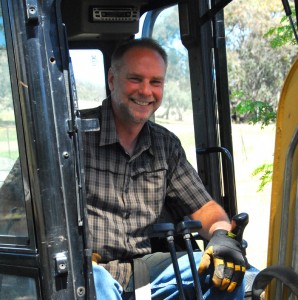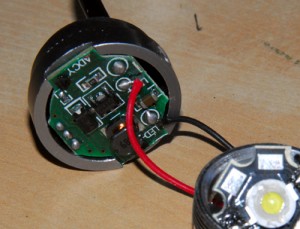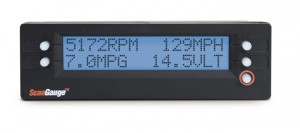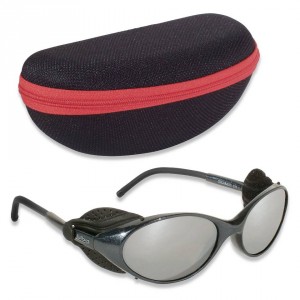Life is not a rehearsal
It is with a little reluctance that I write this column. I am sure that many will suggest I type it just to argue how wonderful I am; others will dislike it on the more fundamental (and justifiable) level that my values are different to theirs.
But here goes.
As I have mentioned in the past, my job has dramatically changed over the last few years. I now work primarily as a trainer, teaching Federal Government public servants the skills and arts of business writing. As such, two or three days a week I find myself in a government department meeting room, wearing a suit and pointing a remote control at a laptop screening a PowerPoint presentation.
That change in vocation is in some respects so radical that at times I feel slightly surreal.
Before the age of about 45 I wore a suit only twice (once in court defending a driving charge and the other time when I got married!); now I wear a suit many times a month. Previously, I knew only vaguely of many government departments and their processes; now I find myself accompanying people into buildings so tight in security that my staff contact person has to stare into a retina recognition camera to gain admittance to their own building.
It’s all very weird.
The other day, when training in Sydney, I found myself working in a room equipped with a large wall mirror. Every now and again, mid-breath about using the active voice or writing in short sentences or using mind maps to organise formal documents, I’d catch sight of myself in the mirror and wonder who the geezer was, bearded and balding and greying – and spouting all this stuff.
In my groups are typically 15 public servants, people aged from their early Twenties to their mid-Sixties. The courses are pretty full-on, so there’s not much lackadaisical chat during content times, but during the breaks I frequently get talking to people. Since I might be training in Canberra or Brisbane or Sydney or Melbourne or Adelaide, I am often asked where I live.
“Eighty kays north of Canberra,” I say. After a pause, I add: “I live in a town of 100 people.”
At this statement people typically blink, then ask more questions. The conversation often then turns to lifestyle, and then to work/life balance.
It seems strange to tell people that there exist lifestyle choices that are very different to the ones they have (apparently) chosen.
(In fact, I think most don’t actively ‘choose’ a lifestyle at all – they fall into it and then spend a lot of time justifying it.)
What choices then?
With the cost of real estate around where I live, you can choose to have a small mortgage.
With a low mortgage, and plenty of land to grow fruit and vegetables and have chooks, you can choose to work only two or three or four days a week.
In fact, if you work more days, you can choose to have one person in a couple stay at home to look after children.
Or study externally.
Or volunteer and work in the community.
Or….
You can choose to have your children attend a tiny primary school with unheard-of parent/student ratios.
You can choose to live in a place where people smile friendly (and genuine) greetings when you meet in the street; you can choose to live in a place where crime is vastly lower than any large city in Australia.
(See why at the beginning I talked about values?)
Sometimes people have asked about a social life – surely it must be deadly-boring living in such a place? But I can state that, if it weren’t for fact that we prefer a rather hermit-like existence, we could have a stronger social life here than anywhere I’ve ever lived. Telling no lies at all, as a family we could go to something like 15 local social events a month.
Commuting time in a car? My main work is in Canberra, and so that adds up to maybe six hours of commuting a week. But I like driving, and with the vast majority of that travel on empty country roads, it’s no hardship. (Especially now that podcasts can be seamlessly recorded and then dialled-up as required. In fact, just today, I was listening to a fascinating series on human consciousness – full of philosophy and thought-provoking ideas. Not for everyone I agree, but for me the travel time just flew past.)
One of the interesting things is that since moving here, we have discovered other like-minded couples who have done just the same thing. People who, through their qualifications and abilities, could be earning a lot of money (try two science PhDs in a town of 100) but who, deliberately and carefully, have chosen to earn much less – and to devote far more time to recreation and/or time with their children, to spend less on the latest large-screen TV or pool or huge house, and to relish perhaps a simpler but more down to earth existence.
I guess that’s nothing new – people have been choosing an ‘alternative’ lifestyle for decades. But the ability to remain completely connected, and to work in a major city or town – but on what is effectively only a part-time basis… I wonder if that isn’t new.
And it’s not just this location. For fun, I just looked up real estate prices and commuting times for places located outside of Melbourne, Brisbane and Adelaide. I could almost immediately find houses and land just like where I live – and at similar prices.
The last time I wrote a blog post like this I finished: if you don’t like how much you pay each month for your mortgage (or rent), or how long you spend each day stuck in traffic breathing fumes, look more widely. It’s not your job or money that is preventing a move: it’s you.
Now I’d say this.
Life is not a rehearsal: this is the only one you have.
Through my work I constantly meet people who seem deeply unhappy: caught in a mad rush through an unfulfilling life. Often they’ll confide to me that they hate their job – but gotta pay that monthly mortgage, y’know. Or they’ll ruefully talk about some office minutiae that is today’s crisis – in full understanding that next week it will all be forgotten.
If you live in a large Australian city, you’re someone who is open to change, and you’ve similar life values to me, look in rural Australia. Adjacent to major centres are places where you can live a lifestyle that is simply wonderful.
To put that in bluntly honest terms: if I lived in a major Australian city, I couldn’t afford to work only three days a week and spend the rest of the time playing with my car projects in my new, purpose-built home workshop.
But that’s what is available when you nearly halve your non-digressional living costs….

 Julian Edgar, 50, has been writing about car modification and automotive technology for nearly 25 years. He has owned cars with two, three, four, five, six and eight cylinders; single turbo, twin turbo, supercharged, diesel and hybrid electric drivelines. He lists his transport interests as turbocharging, aerodynamics, suspension design and human-powered vehicles.
Julian Edgar, 50, has been writing about car modification and automotive technology for nearly 25 years. He has owned cars with two, three, four, five, six and eight cylinders; single turbo, twin turbo, supercharged, diesel and hybrid electric drivelines. He lists his transport interests as turbocharging, aerodynamics, suspension design and human-powered vehicles.







